



I arrived at the Transmediale festival late Friday afternoon, which was hosted as usual at Das Haus der Kulturen der Welt (The House of World Cultures) in Berlin. The area where the building is sited was destroyed during World War II, and then at the height of the Cold War, it was given as a present from the US government to the City of Berlin. As a venue for international encounters, the Congress Hall was designed as a symbol of ‘freedom’, and because of its special architectural shape the Berliners were quick to call the building “pregnant oyster” [1] The exterior was also the set for the science fiction action film Æon Flux in 2005. Both past references link well with this festival’s use of the building. I remember during my last visit, in 2010, standing outside the back of the building watching an Icebreaker cracking apart the thick ice in the river. The sound of the heavy ice in collision with the sturdy boat was loud and crisp. This sound has stayed with me so that whenever I hear a sound that is similar I’m immediately transported back to that point in time. Unfortunately, this time round there was no snow, instead the weather was wet, warm and slighty stormy.
Last year’s festival explored the marketing of big data in the age of social control. This year, the chosen format was entitled conversationpiece, with the aim of enabling a series of dialogues and participatory setups to talk about the most burning topics in post-digital culture today. To give it grounding and historical context the theme was pinned to the “backdrop of different processes of social transformation, 17th and 18th century European painters perfected the group portrait painting known as the “Conversation Piece” in which the everyday life of the aristocracy was depicted in ideal scenes of common activity.” In recent years the festival has scafolded its panels, workshops and keynotes to grand, central themes to guide its peers and visitors, along with a large-scale curated exhibition. If we view the four interconnected thematic streams- Anxious to Act, Anxious to Make, Anxious to Share and Anxious to Secure – we might guess that the festival curators are also anxious to save all the resources (and celebrations) for next year, which is after all, Transmediale’s 30th birthday.
So, I was curious to see how my brief time here would unfold…
This review is focused on the hybrid event Off-the-Cloud-Zone. It featured presentations, talks and workshops, starting at 11 am, going on until 8pm. Hardcore indeed. It demanded total dedication, which unfortunately I was not able to give. However, I did offer my attention to the rest of the proceedings from lunch time until the end. It was moderated by Panayotis Antoniadis, Daphne Dragona, James Stevens and included a variety of speakers such as: Roel Roscam Abbing, Ileana Apostol, Dennis de Bel, Federico Bonelli, James Bridle, Adam Burns, Lori Emerson, Sarah T Gold, Sarah Grant, Denis Rojo aka Jaromil, George Klissiaris, Evan Light, Ilias Marmaras, Monic Meisel, Jürgen Neumann, Radovan Misovic aka Rad0, Natacha Roussel, Andreas Unteidig, Danja Vasiliev, Christoph Wachter & Mathias Jud, and Stewart Ziff.
The Off-the-Cloud-Zone day event was a continuation of last year’s offline networks unite! panel and workshops. Which also originated from discussions on a mailing list called ‘off.networks’ with researchers, activists and artists working together around the idea of an offline network operating outside of the Internet. The talks concentrated on how over recent years there has been a growing scene of artists, hackers, and network practitioners, finding new ways to ask questions through their practices that offer alternatives in community networks, ad-hoc connectivity, and autonomous systems of sensing and data collecting.
Disillusionment with the Internet has spread widely since 2013, when Edward Snowden the US whistleblower leaked information on numerous global surveillance programs. Many of these programs are run by the NSA and Five Eyes with the cooperation of telecommunication companies and European governments raising big questions about privacy and exploitation of our online (interaction) data. This concern is not only in relation to spying corporations, dodgy regimes and black hat hackers, but also our governments. “The idea of privacy has been flipped on its head. People don’t have to disclose their own information voluntarily anymore; it’s being taken from them regardless of their wishes.” [2] (Nowak 2015)
“The NSA’s principal tool to exploit the data links is a project called MUSCULAR, operated jointly with the agency’s British counterpart, the Government Communications Headquarters . From undisclosed interception points, the NSA and the GCHQ are copying entire data flows across fiber-optic cables that carry information among the data centers of the Silicon Valley giants.” [3] (Gellman and Soltani, 2013)
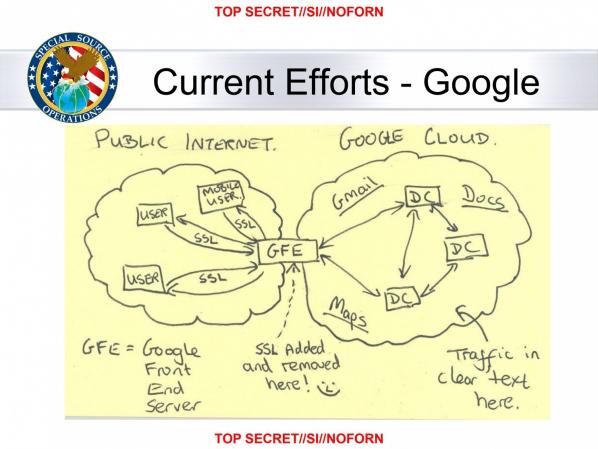
The above slide is from an NSA presentation on “Google Cloud Exploitation” from its MUSCULAR program. The sketch shows where the “Public Internet” meets the internal “Google Cloud” where user data resides. [4]
A legitimate concern for anyone wishing to read the contents of the leaked Snowden files, is that they will be spied upon as they do so. Evan Light has been working on finding a way around this problem, and at the Off-the-Cloud-Zone day event he presented his project Snowden Archive-in-a-Box. A stand-alone wifi network and web server that permits you to research all files leaked by Edward Snowden and subsequently published by the media. The purpose of the portable archive is to provide end-users with a secure off-line method to use its database without the threat of surveillance. Light says, usually the wifi network is open, but users do have the option to make their own wifi passwords and also choose their encryption standard.
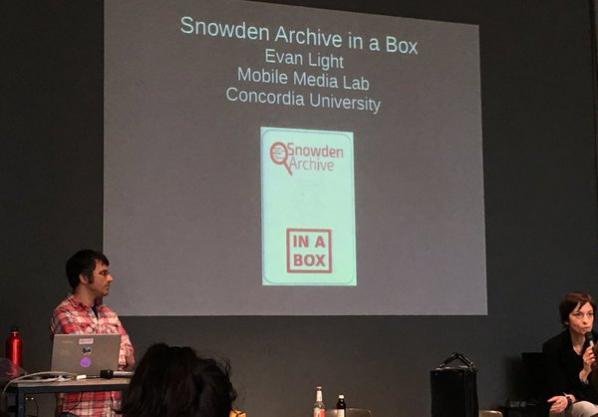
Snowden Archive-in-a-Box is based on the PirateBox, originally created by David Darts who made his in order to distribute teaching materials to students without the hassle of email. It is based on a RaspberryPi 2 mini-computer and the Raspbian operating system. All the software is open-source and its most basic setup can run on one RaspberryPi. In his talk Light said that a more elaborate version would use high-quality battery packs and this adds power for autonomy, along with the wifi sniffer that is running on a secondary RaspberryPi and a flat-screen for playing back IP traffic. If you’re interested in building your own private, pirate Archive-in-a-Box, visit Light’s web site for instructions on how to.

Christoph Wachter’s and Mathias Jud’s work, directly engages with refugees and asylum seeker’s social situations, policies, and the migrant crisis. They’ve worked together on participatory community projects since 2000 and have received many awards. For instance, take a look at their digital communications tool qaul.net which is designed to counteract communication blackouts. It has been used successfully in Egypt, Burma, and Tibet, and works as an alternative to already existing government and corporate controlled communication pathways. But, it also offers vital help when large power outages occur, especially in areas in the world suffering from natural disasters. The term qaul is Arabic and means ‘opinion, say, talk or word’. Qaul is pronounced like the English word ‘call’.

It creates a redundant, open communication code where wireless-enabled computers and mobile devices can directly initiate a fresh, unrestricted and spontaneous network. This includes the enabling of Chat, twitter functions and movie streaming, independent of Internet and cellular networks. It is also accessible to a growing Open Source Community who can modify it freely.
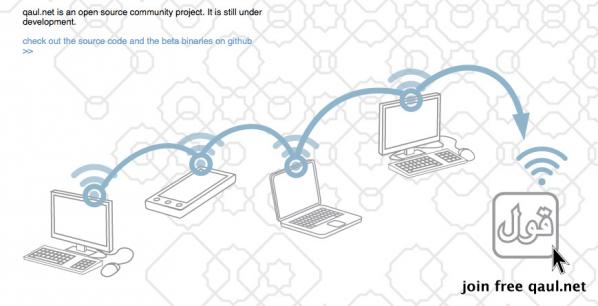
Wachter and Jud also discussed another project of theirs called “Can You Hear Me?”, a WLAN / WiFi mesh network with can antennas installed on the roofs of the Academy of Arts and the Swiss Embassy in Berlin, which was located in close proximity to NSA’s Secret Spy Hub. These makeshift antennas made of tin cans were obvious and visible for all to see. The Academy of Arts joined the project building a large antenna on the rooftop, situated exactly between the listening posts of the NSA and the GCHQ to enable people to directly address surveillance staff listening in. While installing the work they were observed in detail by a helicopter encircling overhead with a camera registering each and every move they made, and on the roof of the US Embassy, security officers patrolled.

“The antennas created an open and free Wi-Fi communication network in which anyone who wanted to would be able to participate using any Wi-Fi-enabled device without any hindrance, and be able to send messages to those listening on the frequencies that were being intercepted. Text messages, voice chat, file sharing — anything could be sent anonymously. And people did communicate. Over 15,000 messages were sent.” [5] (Jud 2015)
A the end of their presentation, they said that they will be implementing the same system at hotspots deployed in Greece by the end of the month. And I believe them. What I find refreshing with these two, is their can do attitude whilst dealing with political forces bigger than themselves. It also gives a positive message that anyone can get involved in these projects.
And then, it was the turn of the well known team at Dyne.org to discuss a project of theirs called Dowse, which is ‘The Privacy Hub for the Internet of Things’. They said (taking turns, there was about 5 of them) that the purpose of Dowse is to perceive and affect all devices in the local, networked sphere. As we push on into the age of the Internet of Things, in our homes everything will be linked up.
“Those bathroom scales and home thermostats already talk to our smartphones and in some cases think for themselves.” [6] (Nowak 2015)
As these ubiquitous computers communicate to each other even more, control over these multiple connections will be essential. We will need to know how to interact beyond the GUI interfaces and think about who has access to our private, common and public information. A whole load of extra information will be available without our consent.
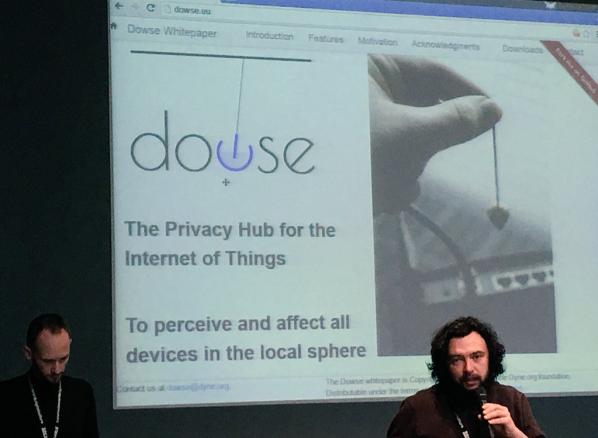
Dowse was conceived in 2014 as a proof of concept white paper by Denis Rojo aka Jaromil. Early contributors to the white paper and its drafting process includes: Hellekin O. Wolf, Anatole Shaw, Juergen Neumann, Patrick R McDonald, Federico Bonelli, Julian Oliver, Henk Buursen, Tom Demeyer, Mieke van Heesewijk, Floris Kleemans and Rob van Kranenburg. I downloaded the white paper and is definitely worth reading.
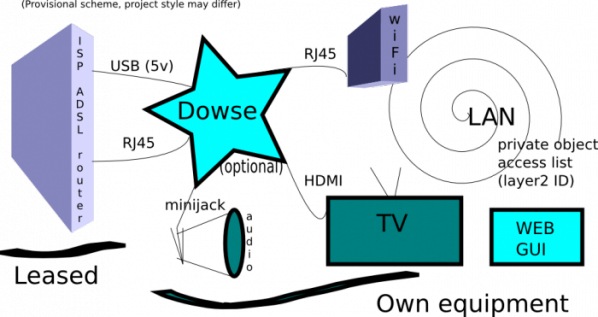
The Dowse project aims to abide to the principles stated in the Critical Engineers Manifesto, (2011). Near the very end of the talk they announced to the audience an open call for artists and techies everywhere to get involved and jump into the project to see what it can do. This is a good idea. If there is no community to make or break platforms, hardware and software, then there is a limited dialogue around the possibilties of what a facility realistically might achieve. Not just that, they want artists to make art out of it. I know there are some pretty clever tech-minded geeks out there, who will in no doubt take on the challenge. However, once those who are not so literate in the medium are able to exploit the project, it will surely fly. It’s going to be interesting, because if you look at the 3rd point in the Critical Engineers Manifesto, it says “The Critical Engineer deconstructs and incites suspicion of rich user experiences.” I’m thinking, that this number 3 element needs to treated with caution. If they really wish to open it up to a diverse user base, to engage with its potentialities, creatively and practically; thus, allow new forms of social emancipation to evolve as ‘freedom with others’. There needs to be an active intent to avoid a glass ceiling based on technical know-how. It’s a promising project and I intend to explore it myself and see what it can do and will invite other people within Furtherfield’s own online, networks to join in and play, break, and create.
Our final entry is the Sarantaporo Project which is situated in the North of Greece. A village in the mountains just west of Mount Olympus in Central Greece close to Thessaloniki, Macedonia and Larisa. The country has been in recession for over 6 years now, and many communities have had to create alternative ways of working with each other in order to survive the crisis. Over this troubling period, new forms of grass-roots coexistence, solidarity and innovation have evolved. The Sarantaporo Project is an impressive example of how people can come together and experiment in imaginative ways and exploit physical and digital networks.

Even before the economic crisis the region was already hit by poverty, and with the added pressures of imposed Austerity measures, life got even tougher. All the young were leaving and then migrating to the cities or abroad. Before the project in Sarantaporo, there was no Internet nor digitally connected networks for local people to use. This situation contributed to the digital divide and made it difficult to work in a contemporary society, when so many others in the world have been using technology to support their civic, academic and business for so many years already.
“In Greece, where unemployment reaches 30% in all ages and genders, and among the youth overpasses 50%, immediate solution for the “social issue” is more than urgent.’ [7] (Marmaras).
“Besides maintaining the network in a DIWO (Do It With Others) manner, and creating an atmosphere of cooperation among far-flung communities that were previously strangers, the Sarantaporo network is incorporating different groups of people into the community, like Farmer’s Cooperatives and techies. It is also creating an intergenerational space for learning.” [9] (Bezdommy 2016)

To resolve this issue a group of friends decided to deal with this problem by setting up a community D.I.Y wireless network to provide free internet access to 15 villages in the municipality of Elassona. “Sarantaporo.gr is an open source wireless mesh networking system that relies greatly on voluntary work both for its development and maintenance. Some volunteers are involved in the project by simply installing an antenna on their roof. Others, more actively engaged with the project, are responsible for sustaining the network by hosting meetings and answering technical questions.” [8] (Kalessi 2014) The audience was presented with snippets from a film made by the filmmaking collective Personal Cinema, about the project. It was made so the story of Sarantaporo’s DIY wireless network gets a wider reach, and that others are also inspired to do similar projects themselves.
These projects are dedicated to creating socially grounded and engaged alternatives to the proprietorial, networked frameworks that currently dominate our communication behaviours. These proprietorial systems, whether they are digital or physical are untrustworthy, and control us in ways that reflect their top-down demands but not our common needs. This reflects a wider conversation about who owns our social contexts, our conversations, our fields of practice, the structures we use, the land, the cables, our history, and so on.
Looking at the state of the planet right now you’d be forgiven for betting on a future not far from the director Neill Blomkamp’s vision in the sci-fi movie Elysium where, in the year 2159, humanity is sharply divided between two classes of people: the ultra-rich whom live aboard a luxurious space station called Elysium, and the rest who live a hardscrabble existence in Earth’s ruins. However, in the Off-the-Cloud-Zone talks we encountered an ecology of strategies to protect our own indegenous cultures from the crush of neo-liberalism, we felt part of a grounded movement discovering new conversations and new methodologies that may provide some protection against future colonisation. Perhaps there is a chance, we can build and rebuild stronger relations with each other, beyond: privilege, nation, status, gender, class, race, religion, and career.
The festival this year was less structured and more nuanced than usual. It gave conversation a greater role and a deeper social context, and opened up the process for the many to connect with the ideas being explored. The whole affair seemed to be slowed down and less caught up in the hyper-macho trappings of accelerationism. It seemed less neurotic and spending less effort to impress. I’m sure, next year, on it’s 30th anniversary, all will be sharp and amazing. However, I liked this less glossy, more messy version of Transmediale and I hope it manages to impress the wrong people again, and again.
Between July 27th and August 29th, 2010, the eleventh edition of the FILE festival is taking place in Sao Paulo (Brazil), at several locations along the popular Paulista Avenue. After a decade of existence, this veteran festival, which spreads over several cities in Brazil (including Rio de Janeiro and Porto Alegre) as well as other international locations, has introduced for the first time its own award: the FILE PRIX LUX. With a total amount of approximately 120,000 euros, distributed in three categories, the prize is unprecedented in the continent and has received, on this first edition, 1,235 registrations from 44 countries.
Yet this award is not the only remarkable aspect of this year’s festival, which stands out for being particularly accessible to the general public. On the one hand, the exhibitions, performances and workshops as well as the symposium have no entrance fees, and therefore there have been many visitors, most of all young people who line up every day to experience the interactive installations at the FIESP-Ruth Cardoso Cultural Centre. On the other hand, the festival organizers, Ricardo Barreto and Paula Perissinotto, have developed this year a project that takes digital art to the Paulista Avenue by placing several interactive artworks at different locations in the public space. Finally, even the FILE PRIX LUX has been open to the interaction with the public by introducing a popular vote category and an online voting system which was accessible between May and June. This openness sets a good example of how media art festivals can engage the general public to approach this somewhat ignored form of art.
In general terms, the award categories at media art festivals have been subject to change as the creative uses of technology evolved during the last decades. The FILE PRIX LUX has the advantage of being created at a time in which it can be relatively safe to set up a few broad categories that cover most of the forms of combining art and technology. Only three categories have been established: Interactive Art (which usually refers to objects and installations that respond to inputs from the viewer/s), Digital Language (related to the festival’s title and which embraces any artwork that deals with language, narrative, code or text in a generative or interactive manner) and Electronic Sonority (the category assigned to any artwork in which the production or manipulation of sound is a key element). These three categories prove to be comprehensive, as shown by the diversity of the projects distinguished with a prize or an honorary mention: immersive interactive installations, musical performances, urban interventions, bioart pieces, a collectively created machinima movie and even an iPhone app are among this year’s FILE PRIX LUX awardees.
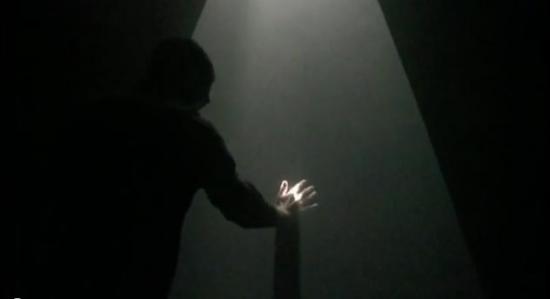
In the Interactive Art category, the winners are Ernesto Klar for Relational Lights (1st prize) and Kurt Henschläger for Zee (2nd prize). Both present immersive environments in which light and space are key elements, although the interaction is totally different. Klar’s work invites the viewer to interact with two projected geometric drawings inspired by the work of Lygia Clark. In a hazy dark room, the viewer sees two T-shaped projections of white light on the ground, which form a three-dimensional space which reacts to the visitor’s presence. The interaction is playful and really beautiful in its simplicity, whilst also limited in time: after a few minutes, the projections suddenly stop reacting to the user’s movements and reconfigure themselves in a new shape. This abrupt interruption is consciously introduced by the artist in order to remind the viewer that the artwork has a life of its own. In contrast, Henschläger’s Zee takes place mostly in the mind of an audience exposed to an overdose of audiovisual stimuli in a foggy room. Continuing the experience of his acclaimed performance FEED, this time the artist allows the viewer to walk around the space and have a more meditative sensory experience.
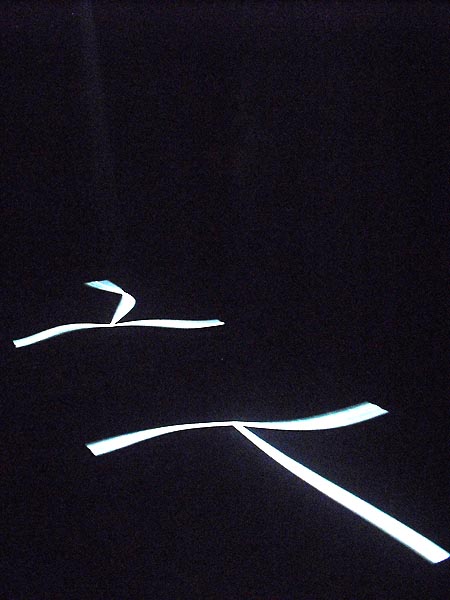
The Electronic Sonority category has brought together several outstanding works, among which Jaime E. Oliver’s Silent Percussion Project and TERMINALBEACH’s Heartchamber Orchestra have been distinguished with the 1st and 2nd prize, respectively. In both projects the human body is incorporated in a novel form in the creation of music, the sound being produced, moreover, not simply by direct inputs but by complex interactions in a constant flow of data. Oliver’s instruments convert the shapes created by the performer’s hands into streams of data that generate, in turn, different sounds. These sounds are not always the same, as could be the case in a traditional instrument, but are changed by the variables established in previous interactions. Thus, Oliver does not simply create a new form of interacting with an instrument but rather a new form of creating music. In a similar way, the [i]Heartchamber Orchestra[/i] project developed by TERMINALBEACH (Erich Berger and Peter Votava) explores a form of creating music based on a feedback loop in which the performers are writing and following the score at the same time. As the artists state, in their project “the music literally comes from the heart”: a network of 12 independent sensors record the heartbeats of the musicians in an orchestra and sends the data to a software that generates a musical score in real time. The musicians play the score as it is displayed on the laptops in front of them, while their heartbeats set the notes in a continuous cycle in which music and performer constantly influence each other.
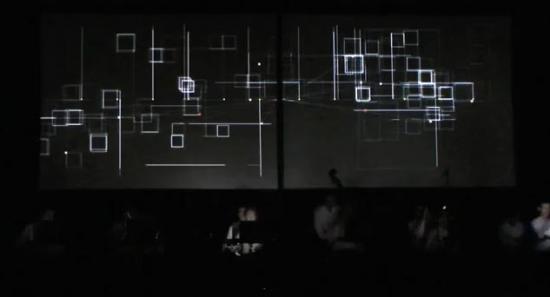
Digital Language is certainly the broadest category of this FILE PRIX LUX, its awardees being quite dissimilar in the formats they use and the objectives of their respective projects. The organizers define this category as including “all research and experiments in the ambit of the multiple disciplines that use digital media”, and the winners exemplify how diverse these disciplines can be. The 1st prize winner, Tardigotchi by the artists collective SWAMP (Douglas Easterly, Matt Kenyon and Tiago Rorke) is a bioart project that sets a critical comparison between artificial and real life. A nicely designed, steam punk-inspired device hosts, on the one hand, a tardigrade, a microorganism measuring half a millimeter in length, along with a robot arm that injects a substance that feeds the creature and a heating lamp that provides warmth. On the other hand, a digital display shows the virtual avatar of this tardigrade, with which the user can interact. Humorously referencing the popular Tamagotchi toy, the artists create a link between the avatar and the real creature: when the user presses the button to feed the avatar, the device inserts real food in the environment of the tardigrade; when an email is sent to the digital creature, a heating lamp gives warmth to the microorganism. Thus, interacting with the virtual pet has consequences in a real living being. This brings our attention into what we can consider alive and how we emotionally attach to artificial creatures while at the same time we undervalue the existence of other living beings. On a different approach, the 2nd prize winner, Hi! A Real Human Interface, by the collective Multitouch Barcelona (Dani Armengol, Roger Pujol, Xavier Vilar and Pol Pla), proposes a more human relationship with technology. A video presents the concept developed by this interaction design group of a different GUI in which a real person is displayed as impersonating the computer. Common interface elements are replaced by handmade physical objects which remind the aesthetics of a video by Michel Gondry. The result is a playful form of interaction in which simple operations such as checking email or upgrading the operating system are shown as actions carried on with real objects by a person inside a box. The proposal is engaging and certainly sets a departure from the old desktop concept, yet it remains unsure to what extend this type of interaction can be applied in a real operating system.
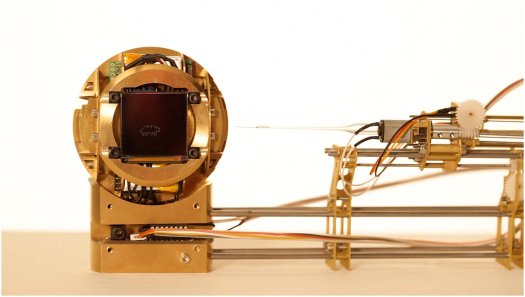
The works that obtained a Vesper statuette (symbol of the FILE PRIX LUX award) along with the also outstanding Honorary Mentions are exhibited at the FIESP-Ruth Cardoso Cultural Centre in a group show that also includes FILE Media Art, a selection of more than 70 works that can be accessed on several computers, as well as a selection of videogames and machinima films. The exhibition is thus richer in content than it would seem at first sight, as the space is divided in numerous sections that conceal several installations which demand (as usual) almost total obscurity. The artworks are well presented, although at times the sound from one installation invades the others, and there are no wall labels that inform the viewer about the concept of the piece or the way to interact with it. The latter, much-discussed issue is quite important, since the info-trainers cannot explain the artworks to every visitor, and quite often this entails that some people may not interact with the pieces or worse, start smashing buttons or interfering projections blindly in the hope of modifying them. Despite this fact, the exhibition has proven to be very successful during the first week of the festival, with a steady flow of visitors who showed a profound interest in the artworks.

A part of the exhibition is devoted to the FILE MACHINIMA section, curated by Fernanda Alburquerque, who selected over 40 works. Among these is the award winner in the Popular Vote category, War of Internet Addiction, by Corndog and the Oil Tiger Machinima Team from China, a 64-minute movie collectively created by players in the MMORPG War of Warcraft. More than mere entertainment, this film has been created as a form of protest against the Chinese authorities’ attempt to control the access and commercial benefits derived from the WoW game, which is extremely popular in the country. The film has had 10 million views since January 2010 and despite being available only in Chinese, it has been the favorite work of those who participated in the online voting system of the FILE PRIX LUX. Besides this feature film, other short films explore the possibilities of building narratives in virtual environments such as Second Life and videogames such as Half Life 2, Eve Online or Shadow of the Colossus.
In addition to the main exhibition, the FIESP Cultural Centre hosts a series of performances and screenings. Under the title Hypersonica, the festival presented a series of digital music performances, among which where the two winners of the FILE PRIX LUX in the Electronic Sonority category. FILE DOCUMENTA, curated by Eric Marke, offers in its 5th edition a selection of “rare and new” documentary films, among which Andreas Johnsen’s Good Copy Bad Copy, an interesting exploration of the conflicts between remix artists and copyright owners, or Robert Baca’s Welcome to Macintosh, which records the first years of the history of Apple Computers.
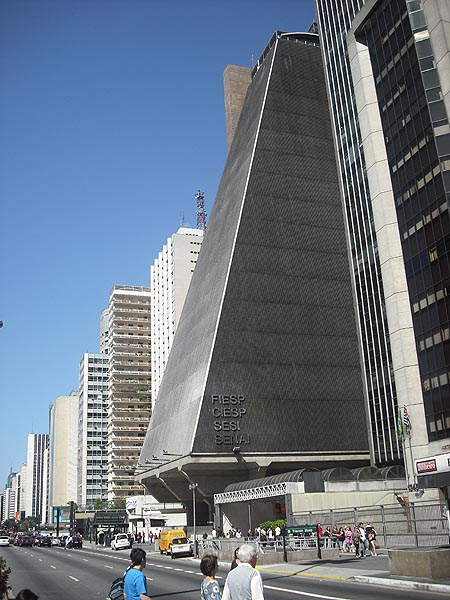
The symposium, hosted by the Instituto Cervantes in Sao Paulo, gathered several experts and artists who presented their explorations in the theory and practice of media art. Among the most interesting contributions were the presentation of Prof. Espen Aarseth on the aesthetics of ludo-narrative software, and the colloquy of South American digital art, in which Raquel Renno (Brazil), Jorge Hernandez, Ricardo Vega (Chile) and Vicky Messi (Argentina) discussed the current developments in the media art scene in the South Cone.
Alongside the FILE PRIX LUX, the most outstanding feature of the present edition of the festival is FILE PAI (Paulista Avenida Interactiva), which takes several interactive artworks to the public spaces in the Paulista Avenue. Interactive art offers the possibility of bringing art to the public space in a more efficient and dynamic form than what is usually known as “public art”. As Ricardo Barreto states: “the public environment is not something empty, aseptic and dead, as is the old white cube; on the contrary, it is an environment teeming with life, with multiple interests and multiple behaviors”. Interactive art integrates itself into this environment and is much more apt to relate to a public that is now willing to take an active role. The organizers of the FILE festival have distributed twelve interactive artworks along the Paulista Avenue, at subway stations, inside shopping malls, and even in a bus. The selected artworks include, among others, videogames such as Patrick Smith’s Windosill or the celebrated games of That Game Company, Flower and Flow; VR/Urban’s SMSlingshot, an urban intervention project that allows users to write a message in a custom-made slingshot that incorporates a screen and a keyboard and then send the message to a wall, where it is displayed as a virtual graffiti; Karolina Sobecka’s Sniff, an interactive projection in which a virtual dog reacts to the presence of passersby; the installations of Rejane Cantoni and Leonardo Crescenti Piso and Infinito ao Cubo, which attracted a large number of people, and the sound piece Omnibusonia Paulista by Vanderlei Lucentini, which is played in a bus as it moves along the avenue, interacting with several points in the itinerary and thus generating a new set of sounds in every trip. These works reveal the possibilities of integrating interactive art in the public space, to the point that, as Ricardo Barreto indicates, “the new paradigm of public art will be the interactive city”. The busy Paulista Avenue is certainly a good location for the creation of an emerging, interactive city.
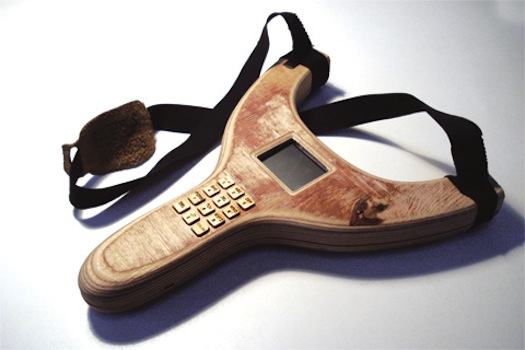
In this 11th edition, the FILE festival has achieved a state of maturity. The FILE PRIX LUX, FILE PAI and an estimated 25,000 visitors to date support its claim of being the largest festival of its kind in Latin America, and a steady event that places Brazil in the map of the international digital art scene. In a tightly interconnected world, each region is a node: there isn’t a center and a periphery anymore, there are no colonies. FILE exemplifies how a region can become a powerful node in this network by promoting the most recent developments in art and technology, avoiding obsolete distinctions between North and South and becoming a point of development for the future stages of our digital culture.
Meat Space and the World Inside the Machine
Danja was an Artist in Residence at Furtherfield’s HTTP Gallery space between the 1st March – 9th April 2010. A Russian born computer artist currently living between Berlin and Rotterdam. Working with diverse methods, technologies and materials Danja ridicules the contemporary affection for digital life and questions the global tendency for cyborgination. Danja co-founded media-lab moddr_ in 2007 which is a joint project at Piet Zwart Institute alumni and WORM Foundation. Based in Rotterdam moddr_ is a place for artists and hackers, engaging with critical forms of media-art practice.
The email interview took place a few weeks after his residency. A recent collaborative project that many readers may already know of, by Danja Vasiliev, Gordan Savicic and Walter Langelaar, all part of moddr.net lab is, Web 2.0 Suicide Machine, which lets you delete your social networking profiles and kill your virtual friends. Danja is certainly prolific, he is also collaborating with New Zealander artist, Julian Oliver who is now based in Berlin. This interview unearths some of the ideas and intentions behind Danja’s personal works, asking what motivates him to use computers, technology and networks, as well as understand more the social contexts and implications of his endeavors.
Marc Garrett: You’ve been on the residency at Furtherfield’s HTTP space http://www.http.uk.net/ for a few weeks now. Before we discuss Netless, the project you have been researching here and some of your other recent works, I think it would be interesting to know about some of your earlier works first. Before the turn of the century you made various net.art pieces. What I find interesting here is that whilst you were creating these works you were also parodying net.art at the same time, was there any particular reason for this kind of approach?
Danja Vasiliev: “HTTP” as an abbreviation was a very significant thing for me throughout the last decade, now having to stay at a place bearing the same title feels like a necessary experience indeed. Fifteen years ago WWW was something very new in Russia and besides the new dial-up aesthetics and world-wide means it brought a complete new layer of existence – “netosphere”, which made my youth. I was trying to understand the technology, though not being of a scientific kind I did it by monkeying around with artworks of others. Later I heard it was called “Open Source” approach. The Website “koala.ru” http://koala.ru.k0a1a.net became a collection of expressionist pages, each page had its own story and often a narrative. Back in the day my arsenal was naturally limited: HTML3, GIF89a (animated) and JavaScript1.2. It felt challenging to work with those tools, file-size was aesthetically just as important as letter-case, and I liked it… I haven’t changed any of the pages since 2002, iirc. The greatest source of my inspiration (image and code -wise) of that time was the baddest of all Superbad – I loved the wackiness yet elegance weaved into the piece. My attraction to /random redirect/ comes from there.
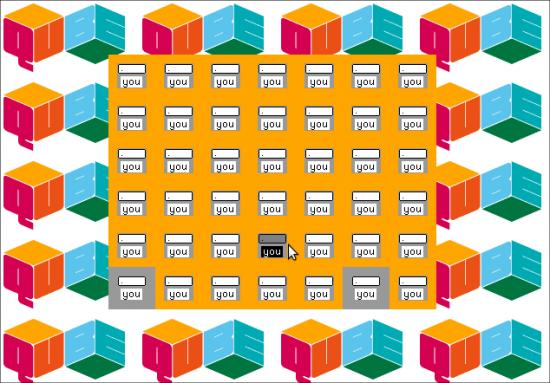
MG: What draws you into using computers in your art practice?
DV: It must be the conflict between the everyday technology and digital life. I’m exploring that edge between the meat space and the world inside the machine. Machine in this case is not just a PC – a single computer is only a part of the network. Acting on those parts adjusts the behavior and perception of the whole – I’m interested in that. Computer hacker attitude and methods are very influential, my works are often merely illustrations of those technological interventions. It makes much more sense to me to try to confront or challenge the technology (and the users) rather then to celebrate the achievements. ‘IT’ today is what politics were yesterday – it and its aesthetics owe to be questioned, broken into pieces, interrogated, sabotaged, reflected upon and ridiculed.
MG: On the NETTIME list on 1st July 2008, Eric Kluitenberg wrote an intriguing essay about your work titled “Turning the machines inside out”.[1] He also discusses something which is close to one of my own interests, about the world as a kind of Interface, metaphorically, virtually and materially “The world according to Rossler is defined by that what transfers between the observer and the “real” world at the interface. It is the interface to the world that defines what can be observed about the “real” world.” Kluitenberg.
Before we talk about Kluitenberg’s concepts regarding his thoughts around your work, I would like to know what your own considerations are in respect of the “World as Interface” and what this means to you?
DV: Well, it always surprises when I come across some theoretical implications confirming, destroying or otherwise connecting to my own work. Perhaps that is why I got to be a maker rather then a thinker – I could never describe the topic I was covering with m/e/m/e 2.0 in a such a profound way as Eric Kluitenberg did. However incapable of posing a verbal question, my intention was indeed to discuss and demonstrate that effect of alienation created by the very medium (or shall I say the interface) of the Web. A System that promotes itself to the users as a fair substitute for reality and provides services for talking, seeing, being and so on, yet fails to escape its own binary jail, i.e. fails to become indeterministic. This determined interface creates determined world – web applications are uploaded straight into our brains. In my perception what we are seeing now is rather reversed or multiplexed inclination of “World as Interface” idea, when devices used for participation in-World and auxiliary systems created around to assist the process, all of this _is_ the World for its users.

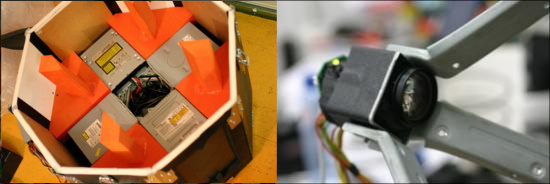
MG: Kluitenberg in his essay, viewed your m/e/m/e/2.0 to be part of a tradition “(inadvertently or not) in the best company of a long tradition of “avant-garde” artists who created various sorts of absurd, ironic, impossible, sadistic, insane or ridiculous machines. His likes are the creators of ominous bachelor machines (Duchamp, Lautreamont, Picabia, Roussel, Kafka), self-destructing machines of the Tinguely type, right down to the magically autistic robotic anti-sculptures of Allan Rath.”
For me, what links m/e/m/e/2.0 to our contemporary world and its ever increasing networked existence “and what we know it to be now” is, its playful and direct link and reference to the Internet. It could not be what it is without the Internet, in which millions have been and are still being taught how to adapt and reconfigure relationships with others, and ourselves. We have become part of the networked driven interface via this socially engineered activity. Would it be presumptuous of me to consider m/e/m/e/2.0 to be a kind of portrait, or a physical re-representation of the human mind or perhaps “head”, metaphorically?
DV: m/e/m/e 2.0 is a manifestation of the absence of any human traits in an act of network communication. Of course it is impossible to demonstrate this without the involvement of the main suspect – the object, the sculpture – is only a half of the work, another half is the Internet. Whenever the piece is not online – it is not complete, and as such – kept in a wooden crate. What “m/e/m/e 2.0” ultimately represents is the physicality of the fellow Internet user on the other end of the wire. It is a device that converts digital instances (copies) of netizens into humanoids, adding flesh around immaterial skeletons. By the analogy to what’s known as “modem” (MOdulator-DEModulator, a device used for digital communication over analog, physical mediums), “m/e/m/e 2.0” is a “semi-modem” or just “mo” without “dem” – it materializes (modulates) without caring to convert back into binary format. It lets the users enjoy their own bodily presence while online; much like the famous FuFme device only with some corrections to the current state of things.
The machine of m/e/m/e 2.0 allows its visitor to sense not only the surfaces of the system but also to get into an strange relationship with the concurent users. The $USER begins to understand intimacy over a distance. The mechanical body can not be re-multiplied to a spontaneous number of requests, instead all of the users come to share one analogue broadcast medium. Whenever someone clicks to open a new link, the information is transmitted to all connected users, “meshing” and colliding their sessions. Seemingly a constraint becomes a feature – unbodied cyberspace gets filled with physical presence. The consequence is that it turns web browsing into a broadcast, collective group activity without any predefined rules. Each page is a part of info-system contained with-in m/e/m/e 2.0, all pages are hyper-linked into a mesh that has no beginning or end.
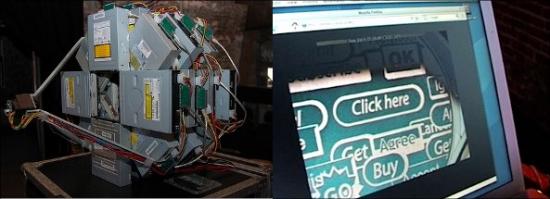
MG: During your residency here in London, you worked on another project called Netless. Could you explain what the project does and why you have chosen to embark on such a venture?
DV: I’m researching a digital communication strategy or technique that would be free from the “panoptical” effect of the Internet. It is too easy to observe and trace users connected to the global network – partly because of the way it is structured, as well as its reliance on the corporate communication channels. It is something about “net neutrality”.
Netless is an attempt to create a new network, alternative to the Internet. More precisely – networks within existing city infrastructures, possibly interconnected into a larger network alike the Internet. Netless is not dependent on specialized data carriers such as cables or regulated radio channels. In fact, there is no permanent connection between all of its hosts (peers) at all – it is net-less. The network is based on the city transportation grid, where traffic of the vehicles are the data carriers. Borrowing the principals from the Sneakernet concept, the information storage devices are physically moved from point A to point B. Numerous nodes of the netless network are attached to city buses or trams. Whenever those vehicles pass by one another a short-range wireless communication session is established between the approaching nodes and the data they contain is synchronized. Spreading like a virus, from one node to another, the data is penetrating from the suburbs into the city and backwards, expanding all over the area in the meanwhile. That broadcast data can be picked-up by anyone.

…the similarities between city transportation maps and circuitry of modern networks are not accidental. their purposes are identical – to provide efficient transport flow between all the locations of the area they cover. routes are designed to match the necessary throughput without congesting at peak times. D.Vasiliev.
MG: What kind of information will be shared within a “Netless” system? Also, are these ad hoc mini-networks going to be attached onto vehicles as secret transmitters?
DV: Constrained by the bandwidth limits Netless networks will work most effectively when dealing with short messages. Technically speaking – “ascii” text, or short base64 encoded binaries/images. Textual data is playing well together with human brains – we often do not need to read a complete sentence to understand the meaning – this would be a great way of keeping the data traffic down. If an error occurs during the transmission of a text message, it can be easily “repaired” by the recipient’s brain – less work for hardware, more information can come thorough. The Netless network integrates into the citizens’ living infrastructures, its data-processing and error-correction routines are outsourced to the users. This is a “hybrid” (parasitic) system, it requires the “human” as resource in order to function.

It would be very interesting to collaborate with some city transportation company, like the one that runs all the buses across London, Arriva. It blankets all areas pretty well as I discovered during my residency at HTTP and if every bus would carry a “Netless” node – the performance would be amazing. That said, it wouldn’t be smart to make “Netless” depend on any commercial entity. Instead I’d rather encourage people to follow up on the project development and start putting together their own “Netless” nodes and take those on everyday travels within the cities. The strength (and bandwidth) of any mesh-network grows proportionally to the amount of nodes involved into the network, thus – (random) network maintenance is the sole responsibility of its users..
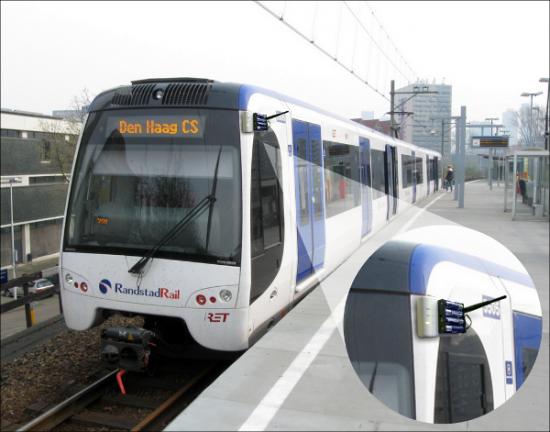
MG: This idea of independent nodes/activities of communication, asking us to consider the notion of what it would be like to be “off the grid”; is an important issue. It reflects wider concerns around individual freedoms and civil liberties, in an age where corporations are channelling our everyday digital behaviours towards, a more “official” form of mediation. Where top-down, imposed digital infrastructures are dominating the interface of who our digital, data-bodies are, whilst having control and access to our content, not on our terms. It also reminds me of the battle between pirate radio and institutionally implemented radio broadcasts, as in who owns the medium and what is perceived “correct” information when sharing with others?
DV: Definitely, reclaiming the medium (or the net-space for this matter) does not happen on paper or during some international conference on the topic of net-neutrality. Such changes in disposition of the forces – corporate state on one hand and personal interest/freedom on other is a tedious process; approached top-down it might take ages to complete. Revolution starts on the streets! Rather than having endless debates and explaining to the officials about how and why “Inter Net” is different from “Closed Circuit Tele-Vision”, we respond proactively, ahead of the regulations; creating our own communication strategies. I see my role here in exemplifying the conflict and its resolution.
MG: To the more traditional art practitioner out there who may not be so dedicated or as involved as yourself, in using computers and technology as part of the creative process; how do you manage to keep the balance, maintain the essence of what you do, as art?
DV: I’m for sure not “doing art”. I reflect on certain things, certain events, topics. Those often happen to have technological origins – nothing very surprising nowadays. My works are somewhat “improved” versions or “hacks” of our every-day technology and thus – our life. It is an essential thing for me to work with the same means as the means of the subject of my criticism – e.g. /misuse/ a piece of technology to demonstrate its other potentials; it is a more constructive approach.
MG: What other projects can we expect to see in the future other than what we have discussed so far?
DV: More technological interventions… and I was also thinking of building a railway model! People should check http://k0a1a.net more often.
MG: Will do, and thank you very much for the conversation…
DV: Thank you, nice chatting…
—
danja vasiliev
http://k0a1a.net
Danja was also interviewed by Marc on a Furtherfield, radio broadcast 6th April 2010 – Resonance FM. http://www.furtherfield.org/resonancefm.php
Featured image: Photograph of a creative experiment on more intelligent modes of inhabiting the planet
Open_Sailing‘s biggest achievement is perhaps to have turned our future into an open source project. Led by a group of enthusiasts, gathered around the idea of “we don’t know what will happen, but together we can invent our future and cope”, the project puts forward a very ambitious, action-driven, experiment-led, way of thinking forward. After meeting with the founder of the project, Cesar Harada, Open_Sailing proved to be a much more complex enterprise than I originally thought.
Initially the project started by mapping threats, the idea being that threats can produce something else than fear. Indeed Cesar Harada, was decided to turn threats into design constraints. This constitutes an interesting methodology to deal with the current climate of fear. The exploitation of threat has become the standard procedure to stabilize a permanent state of emergency. Mobilising virtual threats, states acquire exceptional powers that facilitate the implementation of ever more pervasive measures of control. The current case of swine flu is the last of a long list of exercises of mass modulation of fear. War on terror is the paradigmatic one. On the other hand, and following the warnings of the Maya calendar, all sorts of popular tales for an apocalyptic 2012 have started to populate the planet.
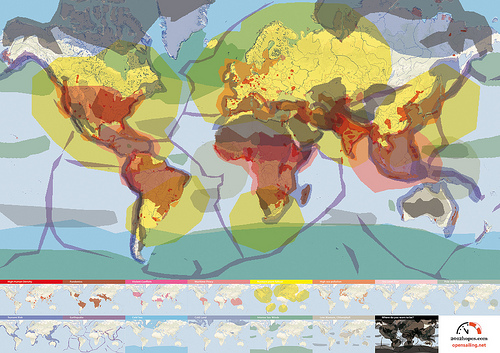
The role of Open_Sailing is to function as a catalyst that channels all this energy into the production of a better future. In short, its role is to transform fear into hope. Certainly this functioned as a strong attractor for new collaborators and soon the team started to grow. After putting together large amounts of real-time data about all sorts of dangers such as tsunami, terrorist attacks, nuclear accidents or pandemics, it became clear that the potential safest spots on earth were mostly located at sea. That led to the idea of designing the infrastructure necessary to inhabit those spots based on the concept of ‘Open Architecture’. Fear had been successfully turned into an active force unleashing the creative process. Inspired by this initial concept the Open_Sailing team started a very intense process of scientific, technological, architectural and artistic research that resulted in a first prototype awarded at Ars Electronica: Open_Sailing_01.
“A drifting village of solid and comfortable shelters surrounded by flexible ocean farming units: fluid, pre-broken, reconfigurable, sustainable, pluggable, organic and instinctive.” [1]
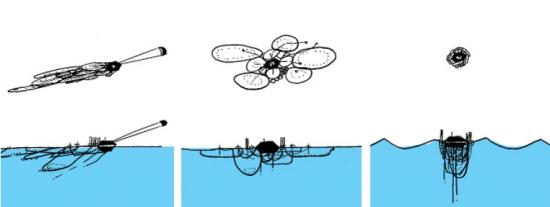
This drifting village, which is about 50 metres in diameter and can host four people, is designed to respond to its environment, being able to become compact and endure severe weather conditions, and spreading out to harvest in calm situations. Open_Sailing_01 was supposed to set sail last May 2009 but mis-coordination in the production with Ars Electronica delayed the plan. In the meantime, small intermediary prototypes of different modules are being built and tested constantly, but the Open_Sailing team hopes to put together the main modules of the International_Ocean_Station for general testing by the summer 2010.
One other important thing that came across in the interview with Cesar Harada was how soon after Open_Sailing was set in motion, it became clear that the project was not only about escaping the problematics of our society. It was definitely not an idealistic utopia happening elsewhere and starting a world from scratch. Rather than an exercise of escapism, they realised that the idea of inhabiting those sites where there is no threat had become an experimental laboratory where to grasp the future. Indeed Open_Sailing is very much about finding ways to face and deal with the very problems of our world.
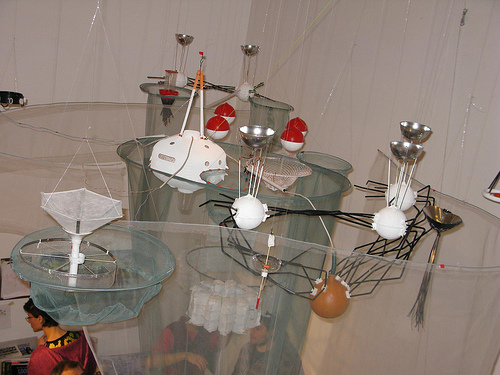
“Be it overpopulation, global warming or energy conflicts, we are living in a time where ‘Apocalypse’ beckons. We need to collectively invent and spread bootstrapping DIY technologies for the forthcoming challenges, not only to survive but to re-invent how we inhabit this planet.” [2]
This became particularly obvious when the team flew to Morocco to try out some live-saving structures. Between the coast of Morocco and the Canary Islands in Spain hundreds of illegal immigrants die every year at sea. A high-seas permanent shelter would provide a low cost life-saving facility for the migrants.
This particular instance is also paradigmatic of the way in which experimentation is carried within the project. Future thinking is developed through material instantiations. This very characteristic process of design and engineering disciplines gives Open_Sailing an exciting palpability, a materiality, a commitment with actualisation that accounts for its potential to bring about real change. Commitment with results drives the project away from the artistic disciplines, but the poetics of the project undeniably brings them back together. A project that in a year of development has acquired such a level of complexity necessarily had to go through a very intense and accelerated process of conceptualisation and experimentation. And there comes the figure of the enthusiast, an experimental survivalist who is willing to take a plane the morning after an idea has come up to participate in a military training testing life-saving technologies.
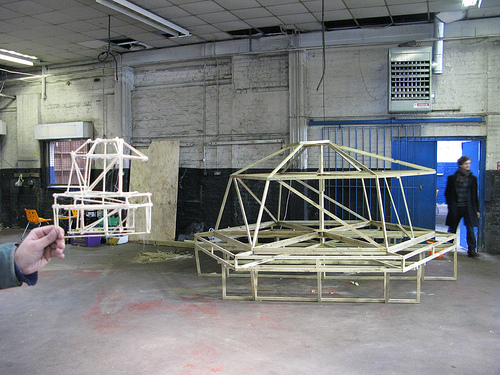
Even more interesting is perhaps how this enthusiasm becomes contagious and the project starts to work as a truly open source venture. Open_Sailing becomes a powerful autonomous entity that keeps bringing people in a dividing itself into labs. Each new lab engages a whole new group of contributors, with a new set of preoccupations and hopes. The project proves to be definitely not about the implementation of a master plan or utopian blue print, but an example of how open source can literally be applied to the construction of alternative worlds. Within these labs we find different experimental research projects focusing for example on mesh networking; pollution, climate and natural reserve monitoring; sustainable aquaculture in high seas; or energy autonomous systems that generate electricity through wind, sun or wave power.
Now, there is of course the problem of co-option. The research being done is a very useful material with infinite commercial and even military applications. But perhaps this is not something that compromises the success of the project. Rather, its value lies in its capacity to encourage people to co-design their own futures. It is more about joining people that want to create than attracting those that want to buy. Surely, it is the process of creation of alternative that’s been set in motion that is truly significant, even more than the technologies being produced. Furthermore, Open_Sailing manages to reverse the process of co-option, the same way it reverses the effects of threat. Collaborators turn to scientific institutions, corporations, military research, as a useful resource, and then open up the knowledge acquired. This is not a new ‘green design’ product for the consumerist society, it is a spark for a collaborative rethinking of the world.